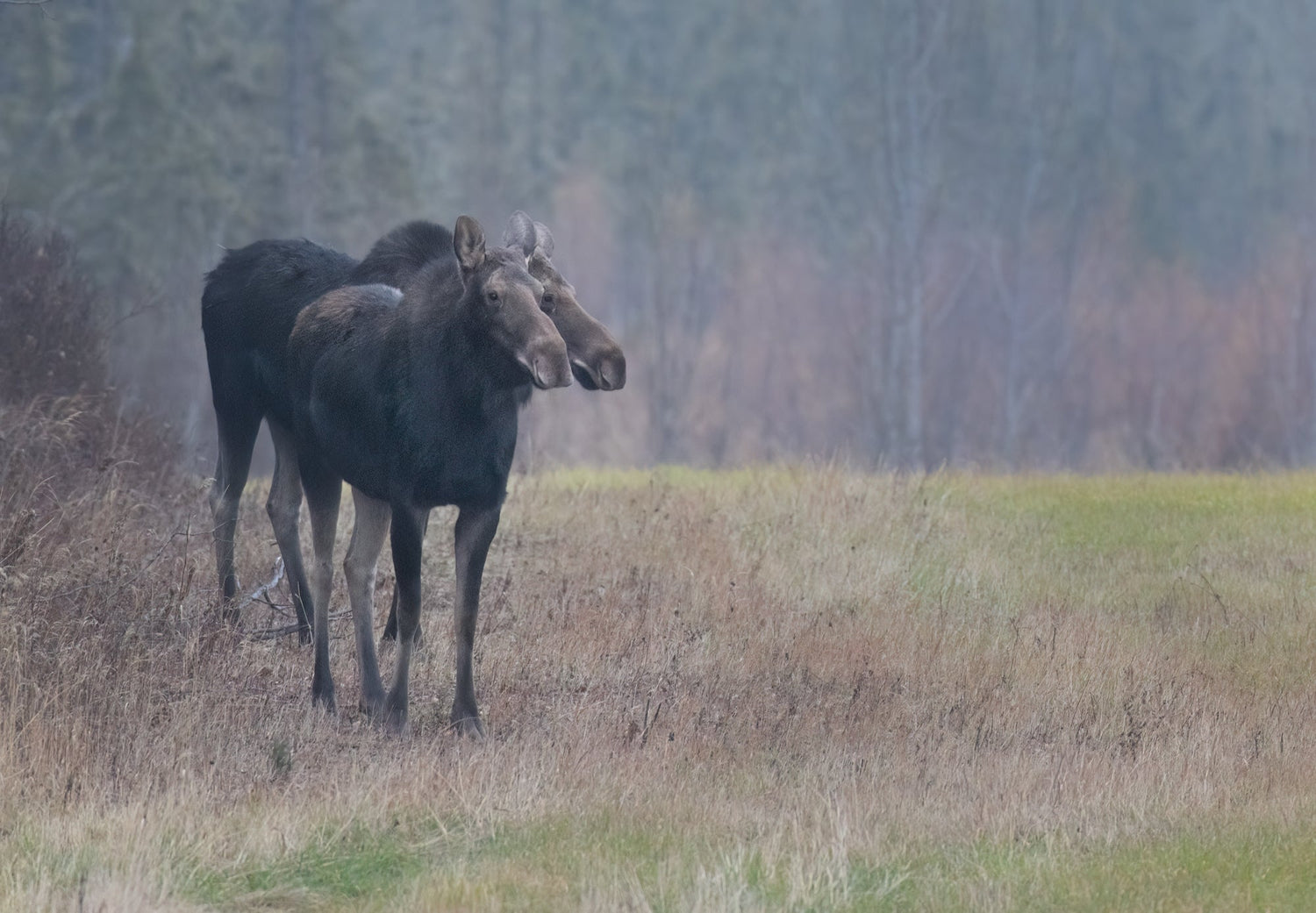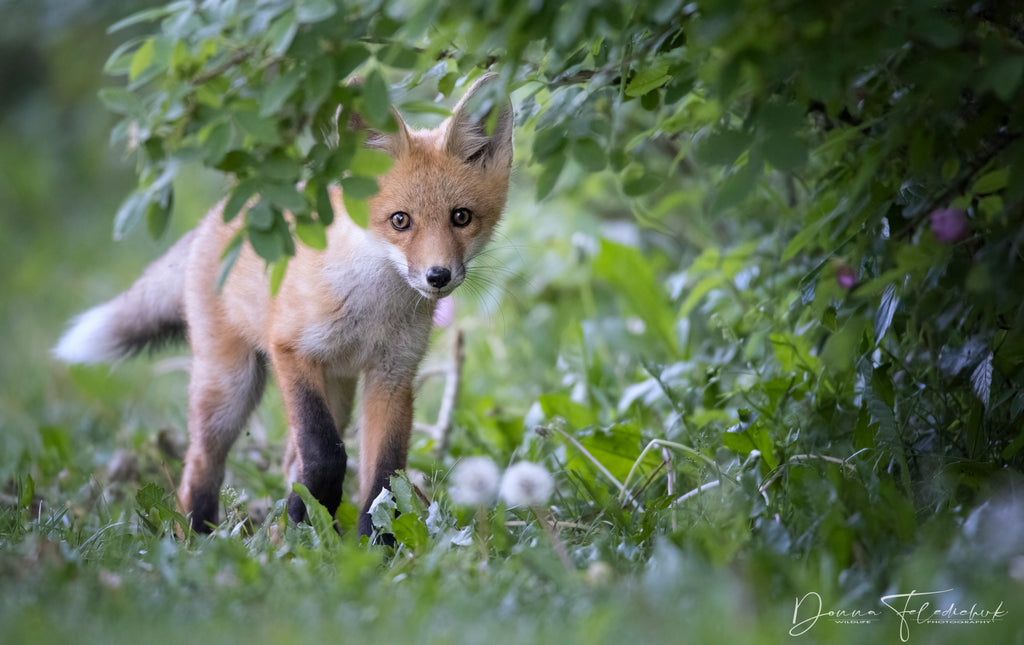
You Are Never Too Old: Embracing Wildlife Photography at Any Age
Moose in a field along taken from inside my vehicle while I was parked in a field
I got comments and messages from people fairly regularly stating they wish they could get out more and enjoy nature. They tell me that their age or their health prevents them from hiking and carrying heavy equipment so they cannot take wildlife photos.

This elk may look like it was photographed after hiking into a mountain meadow but it was actually photographed along the side of a road during rut season
Let me tell you a few things about wildlife photography. A good photographer can take a photo of animal in their backyard or city park and make it appear to be deep in the rugged wilderness. About 70% of the photos I took did not require me to hike into some rarely accessible area carrying a 70 lb backpack and walk for days to some remote place that has rarely been touched by human civilization. That is a romanticized version of wildlife photography and it is propelled by the stereotypical image of a wildlife photographer as a 30-something Columbia-wearing outdoors person who can start a fire by rubbing two sticks, talk a bear into backing down and climb a sheer rock face with no rope. Look at Instagram and you will see the 30-something wildlife photographers posted their gym workouts as much as their photos. Do not let this lead you to believe that your age or your health cannot let you pursue your passion.

Photo taken during a fall guided photography tour in Alaska
Let me let you in on a little secret ALOT of the wildlife images you see of bears charging through the water or the lion stalking their prey are taken on guided wildlife trips. The trails into the region have been made long ago, ATVs or jeeps drive you to within meters of the action, little physical exertion is required and you return to a soft bed and catered food each evening, no roughing it here. You can even bring a tripod if needed so you are not holding your camera while you wait. Those trips, however, cost a lot of money. Put aside the grizzlies and the cheetahs, moose, deer, eagles, owls, antelope, and many other species are all fairly accessible if you know where to look.

A photo of a grizzly cub that was eating grass along the edge of a parking lot taken from inside my vehicle
I started in photography over 30 years ago when I bought a camera for my first trip abroad to India. For years I did travel photography capturing the culture and architecture of such wonders like the Taj Mahal, the Arc De Triumph, London Bridge, and the beaches of the Maldives. Back then I had my Pentax and some lenses and was on my way, I went where I wanted regardless of the terrain or the weather. Fast forward a few years later I was married with three children. My schedule was ruled by their activities, I spent evenings and weekends at hockey arenas, soccer and football fields, gymnasiums, and swimming pools. When I picked up my camera it was to photograph my children at a meet or game or to document their birthdays and graduations. Once all my children had grown up and left home, I found myself longing to be outdoors more. On a trip to Jasper (a place we go every year to hike), I brought my camera to take landscape photos and instead found myself wanting to photograph all the wildlife I saw. I was packing my Pentax up the mountains hoping to see an elusive grizzly, find a stellar jay, or spot a northern pygmy owl. What I have learned is the majority of the wildlife I encounter and most other photographers are within 500 meters of an access point, such as a trailhead, a side road, or a shoreline. I no longer pack big cameras on hiking trips unless I am going to a mountaintop meadow where I expect to see grizzlies or a plateau where bighorn are grazing.

A great gray owl photographed on the edge of the same field as the photograph with my vehicle, easily accessible and could park close and get out and take photos within a few feet of my SUV
When I turned 50 and menopause started to creep in, I noticed my body could no longer recover as quickly from a long hike or a gym workout. All my old sports injuries started to nag me, my bum knee from a torn ACL playing soccer, jammed vertebrate in my neck from a basketball injury, ligaments issues in my wrist from who knows what, and by far the worst a totally destroyed lower back from a severe crash 10 years ago when I was hit by a fully loaded full tanker, a B train semi doing over 100km/h. For the last two years as arthritis has set into my back, there is not a day that I do not suffer pain, yet still most days I go out and look for wildlife. So how do I do it?

One of our fields surrounded by forest on all sides makes a great place to sit and wait in my vehicle for wildlife to emerge
I live in the country so I travel back country roads and road allowances in my vehicle where by the way you will see 80-90% of your ungulates. And that's great because you want to see them here. If you found a moose in the forest you are not going to get a nice open photo of it, branches and leaves will obscure the shot. But if you see it in a field, with the treeline in the distance you can get nice photos with creamy backgrounds that enhance not distract from the moose. I drive around backroads and through our fields a couple of hours a day. In the wintertime, besides the ungulates, I will find owls out hunting, eagles, and hawks in the warmer months perched on roadside trees and fence posts. If you have mobility issues you can still take a lot of great photos from your vehicle meanwhile enjoying the countryside.

Red fox kit at a local provincial park
Another place to go if you cannot hike rugged terrain or carry a heavy camera and lens a great distance is a provincial or national park. Given that wildlife is protected in these areas they tend to be in more abundance and thus easier to find. And given that people frequent these places they are more tolerant of humans than in less populated areas. You can often find wildlife in these parts by having patience, finding a space to pull off by an open area, and waiting. Wildlife will come if you wait.

My yoga mat and camera on a sandy beach photographing pipers
One of my biggest issues is getting low to the wildlife so I am at eye level. It is hugely important to get great photos. If I am going to lay on the ground it has to be for something special because I will be forever getting back up again and my back will remind for days later. So I carry a yoga mat in my car at all times. I will place it on the shore, sit on top and place my camera on the mat. Now with the mirrorless cameras, I can flip out the viewfinder and do not have to lay behind the camera to compose the shot. I Am forever thankful to the creators of this feature as it has definitely helped my back.

A pelican at sunset photographed from an easily accessible beach in a provincial park
Do I still hike a long way, trek through the snow for miles in snowshoes, or kayak kilometers on end on a lake? I do, but not every day as I simply cannot anymore. I may do a 15km hike in Jasper but I know if I do that, I am also not hiking for the next two days. I only make those hikes and treks now if I want to photograph something I cannot otherwise access, like the bighorn sheep in full rut fighting in a high-up mountain meadow, grebes and loons carrying their babes on the back at least. or a great gray owl on the perfect perch only accessible by wading through the snow. Some of my best photos have come from waiting in a vehicle until something emerged in a field. The bottom line is do not be discouraged by your lack of mobility or age, but do what you can rely on transportation to get you around, and enjoy what is accessible in your region whether it be by going to a park or driving a back country road, but do not be deterred in pursuing your passion.
If you want to take a wildlife photography tour that does not require a lot of physical activity, yet allows you to get close to grizzlies and take great photos and have luxurious accommodations to rest and relax each evening consider joining on my great bear rainforest fall grizzly tour.

